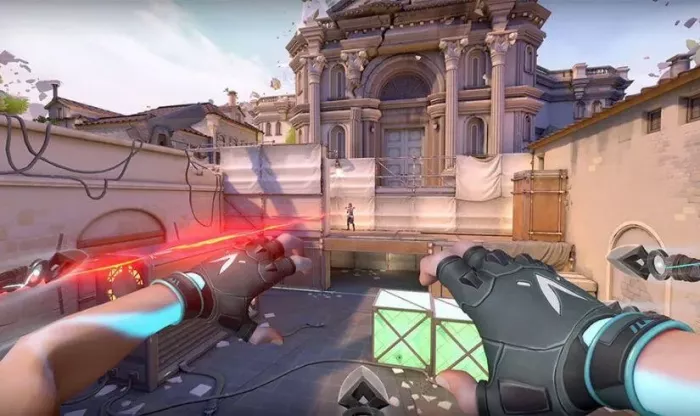Let’s be real. Shooters used to be simple: grab a gun, learn the map, and try not to get smoked in the first 30 seconds. But if you’ve played anything remotely modern lately, you know that world is long gone.
Today’s shooters are fast, punishing, and oddly cerebral. They’ve become digital arenas where every move feels like a calculated risk, and that risk is part of the thrill.
Shooters Aren’t Just Reflex Tests Anymore

Games like Counter-Strike 2, Escape from Tarkov, and Doom: The Dark Ages aren’t just about twitchy aim or headshot percentages. They’re layered. Take parry mechanics, for example. Clair Obscur: Expedition 33 (which is turning heads after the 2025 Summer Game Fest) rewards you for perfectly timed blocks by handing you back Action Points, basically letting you hit harder in your next turn.
And Doom? It’s gone medieval, quite literally. A shield parry system in a franchise built on pure speed and firepower? Unexpected, but it works.
These mechanics don’t just raise the skill ceiling: they mess with your adrenaline. Do you risk the perfect parry for a clutch reversal, or play it safe and eat a little damage? Every second counts, and every decision carries weight.
The Rise of Strategy-Driven Thrills
It’s not just combat systems that are evolving. The entire shooter genre is getting its thrill fix from tension, not just explosions. Time-to-kill is shorter, stakes are higher, and survival often depends on who makes the smarter call, not just who reacts faster.
Even economic systems are getting more strategic. CS2, for instance, leans heavily into in-match economies. Players have to manage loadouts and spending like they’re budgeting for a small business. Rush too soon with weak gear? You’re toast. Hold out for one big buy round? Could pay off (or flop completely).
Where the Edge Really Gets Blurry
Now, let’s talk about the elephant in the room: the new wave of CS2 casino platforms. No, not traditional casinos. We’re talking about skin betting, case battles, jackpot draws, and roulette spins, all centered around in-game cosmetics that sometimes trade hands for hundreds, even thousands, of dollars.
On paper, it’s “just a side hustle” for some players. In practice, it’s a full-blown risk-reward playground that mimics gambling dynamics without ever using the G-word.
This isn’t some fringe activity either. These platforms are growing fast. Players wager skins for a shot at something rarer. Sometimes they win big. Other times, they lose it all. It’s excitement, suspense, and a whole lot of psychology rolled into one flashy UI.
Tech’s Role in All This
AI is quietly powering a lot of what makes these environments so sticky. From matchmaking that adapts to your playstyle, to item drops influenced by predictive models, modern shooters are built to keep you on the edge. Not just in skill-based ways, but emotionally too.
Games are getting better at reading you. That sniper bot who somehow always peeks when you reload? It’s not a coincidence. Systems are watching, learning, adapting. The tension isn’t just between players anymore: it’s between you and the game engine itself.
So... Is This the Future?
Kind of feels like it, doesn’t it?
Games are evolving into layered thrill machines. Between the risk-reward combat, high-stakes inventory systems, and third-party economies like CS2 casino platforms, players are being pulled into a loop of tension, decision-making, and reward. It’s a little messy. A little genius. And totally addictive.
The line between strategy and adrenaline is no longer clear, and maybe that’s the point.
Post Comment
Be the first to post comment!





